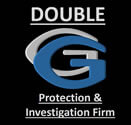Let us walk you through it…
One of the first questions we receive when we get a call about doing an investigation is “What’s next?” “How do we begin?” “When do I pay?” This posting is going to act as a guide through the process. So, let’s begin.
Step One: Call and Consultation
When you have made the decision to call a private investigator you’re already filled with questions. What gave you the impulse to call was the need to know something that you needed help finding out. That is the biggest step in any investigation: knowing you need assistance with your problem. During the call, the agent on the phone will get as many details about the investigation as possible. Who the subject is; what is the purpose of the investigation (i.e. what do you want to find out); details about the subject’s commonly visited places, vehicles, etc.; and any information that may be relevant to the case (they’re disappearing after they’re finished with work for example). This information is vital to a successful investigation and it helps if you have this available before you speak to an agent.
Once the initial fact-finding is done during the call, the agent may be able to give you a quote over the phone or they may need a few minutes to calculate the costs, in which case they’ll call you right back. Once a cost has been established and you wish to move forward with the investigation, the agent will send you a Customer Agreement and a Subject Information form via email. Also, in a separate email, they will send you a invoice for a retainer. The retainer is to lock the agency into the case. The agreement is the legal permission for the agency to proceed. Once these two steps are returned to the agent they can move to step two.
Step Two: Pre-Investigation
Once the agency is legally allowed to begin an investigation, the first step is to do a background check on the subject. This, when combined with the information provided by the client, can assist in cutting down required time to locate the subject and begin the surveillance. During the pre-investigation portion of the case, the agency is in constant contact with the client to discuss options and determine the best course of action to achieve success.
Also during the pre-Investigation, our agent will do a dry run of any known areas that will be used during the actual surveillance. This gives our team the best knowledge of the area to cut down on any chance of being “made” during the surveillance. By pre-scouting locations, we can determine the best area to set-up surveillance, roads that we can cut down, and places that are “hot” spots.
Step Three: Surveillance
Once the time and place is determined, with the input from the client, the agent can begin surveillance. Surveillance can take anywhere from a couple of hours to a few days, depending on the case and the required outcome. At times, the surveillance may be cut into small increments or it can be all at once. Either way, the client’s input is needed to determine this.
During surveillance, the two main objectives it to A: get knowledge and proof of the subject’s dealings, where abouts, and interactions. B: do not get made. Made is when the subject figures out they’re being followed. This is why private investigators have years of training to achieve a good surveillance skill set; because being made eliminates any chance of getting the evidence the client needs.
Surveillance can be at a fixed location or mobile. A private investigator is prepared to follow the subject on foot or on the roadways. Two things to keep in mind when hiring any private investigator: 1) the P.I. is required by law to report what they find. If, for example, the client is asking for proof of infidelity, and there is none during the investigation, the P.I. cannot make up evidence. Any private investigator that does this is breaking the law and our moral code. 2) during mobile surveillance it is imperative the P.I. is not made but also remains safe. If, for safety reasons, the subject is lost, the P.I. has ways to pick them back up (which is why a good pre-investigation is done) on the same day or pick them up again at a later time.
During the surveillance, the P.I. will attempt to get proof of the client’s desired outcome by using video, photos and possibly audio. Depending on the type of surveillance, the P.I. has multiple different tools to achieve these goals and is trained on how to use them efficiently.
Step Four: Findings Report

This is a basic breakdown of a investigation from beginning to end. Every investigation is different, and some may have additional steps, but this will give you a basic understanding of what to expect during the process. If you have any questions before or after the investigation is complete, you can always reach out to your P.I. as we are always here to help.
Double G Protection & Investigation Firm is a professional private investigation firm located in the Northern Virginia area. We specialize in background check, surveillance and process serving along with other services. Please click here for the services provided by Double G Investigations.



